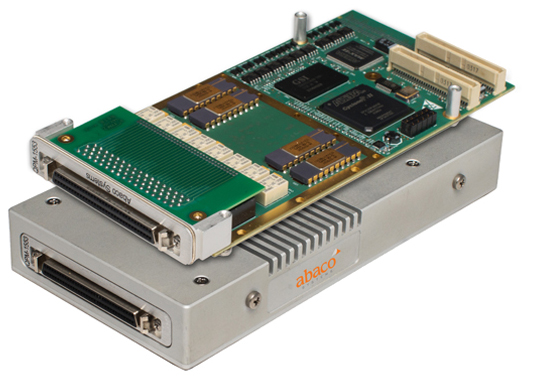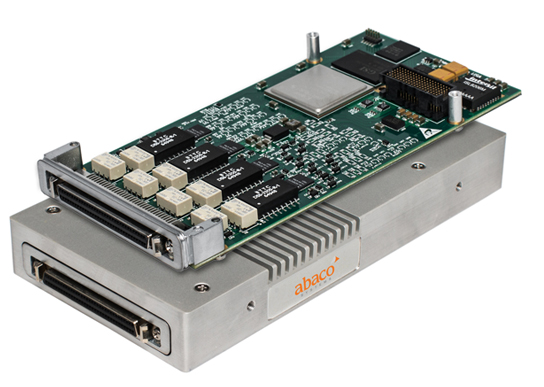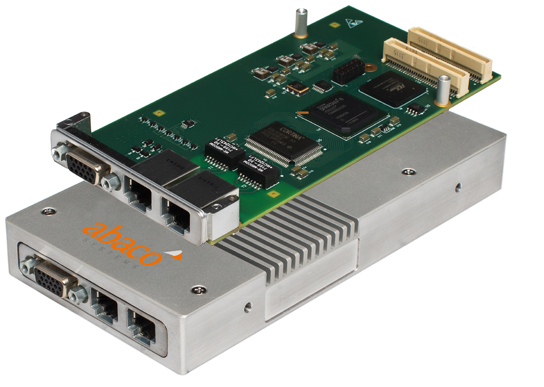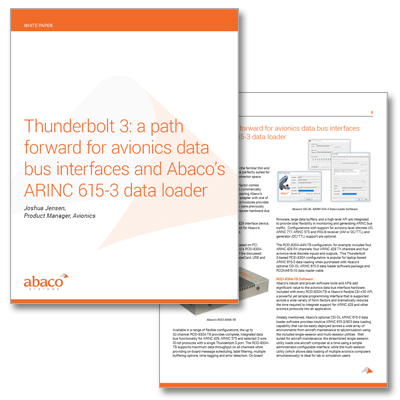Say goodbye to slow. Say goodbye to obsolete. Say hello to Thunderbolt 3.
Where are they now?
If you’ve tried to buy a new laptop with ExpressCard or PCMCIA connectivity recently, you’ve almost certainly been disappointed. ExpressCard and PCMCIA have gone the way of the once-ubiquitous parallel interface. That’s a problem in an avionics world that has historically relied on those interfaces. Yes, there’s USB – but for many applications, bandwidth is too low and latency is too variable – and at 30 microseconds or more, too high. And: USB doesn’t support hardware interrupts, DMA or PIO access.
The world of portable avionics devices needed something better. Much better.
More Speed.
- 40Gbps Thunderbolt
- Four lanes of PCI Express Gen 3
- Two streams (eight lanes) of DisplayPort 1.2
- Integrated USB 10Gbps host controller
- Four times the data and twice the video 40 Gbps bandwidth of any other cable.
Recent government-mandated security requirements have presented a challenge to avionics interface customers in that migrating to newer operating systems and hardware creates significant technical obstacles. Availability of the Thunderbolt 3 interface significantly eases that migration for users of portable avionics devices.
Connectivity nirvana.
When Intel launched the Thunderbolt 3 interface, the company described it as “computer port nirvana”. Why? First, because it delivers bandwidth of 40GBps – four times the data rate of USB 3.1. How fast is that? Fast enough to download a 4K movie in 30 seconds. It uses the USB-C port – meaning it will work with almost any device. It delivers latency of less than a microsecond. Thunderbolt 3 will also provide up to 100 watts of charging power. Oh, and: it supports daisy-chaining. And hardware interrupts. And DMA. And PIO access. What’s not to like?
Thunderbolt 3 does almost anything you’d want an interface to do.
| FORM FACTOR | BANDWIDTH | LATENCY | H/W INTERRUPTS | DMA SUPPORT | DIRECT PIO ACCESS | |
|---|---|---|---|---|---|---|
| Thunderbolt 3 | External | Up to 40 Gbps |
< 1usec |
Yes |
Yes |
Yes |
| USB 2.0 (HighSpeed) | External | 480 Mbps Half-duplex |
Highly variable, but min. polling interval is 125 usec |
Not Supported | Not Supported | Not Supported |
| USB 3.0 (SuperSpeed) | External | 5 Gbps Full-duplex |
Highly variable, avg. latencies approx. 30 usec |
Not Supported | Not Supported | Not Supported |
| USB 3.1 (w/ USB-C connector) | External | 10 Gbps Full-duplex |
Highly variable, avg. latencies approx. 30 usec |
Not Supported | Not Supported | Not Supported |
| Ethernet | External | Variable, depending on bus rate, packet size, & network |
Extremely variable |
Not Supported | Not Supported | Not Supported |
| PCI | Bus-based | Up to 66M words/sec |
< 1usec |
Yes |
Yes |
Yes |
| PCI-Express - Gen 3 | Bus-based | 8.0 Gbit/sec per lane |
< 1usec |
Yes |
Yes |
Yes |
The speed and features of bus-based. The convenience of cable. Thunderbolt 3 is now available for Abaco portable avionics devices.
Four – and counting.
Abaco was first portable avionics device supplier to see the opportunity that Thunderbolt 3 presented for our customers. The launch of the RCEI-830A-TB with support for ARINC 429, ARINC 615-3 dataloader, ARINC 717, ARINC 575 and selected 2-wire, 32-bit protocols and the QPM-1553-TB was quickly followed by the launch of the RCNIC-A2PA-TB for AFDX/ARINC 664 Part 7 protocol traffic applications and the RAR15XF-TB - the highest density portable MIL-STD-1553 and ARINC 429 device available.
And: there’s more to come.

Thunderbolt 3 for:
- Data loading
- Flightline
- Test and simulation, SIL
- Embedded

Thunderbolt 3 for:
- MIL-STD-1553
- ARINC 429
- ARINC 664/AFDX
- Multi-protocol

Thunderbolt 3 for:
- Ultimate performance
- High density
- Portability
- Seamless support for existing BusTools and Abaco APIs

Thunderbolt 3 for:
- Today
- Tomorrow
- Next year
- Next decade
We just dropped in your data loader, and it worked the same as our existing solution.
- a major aircraft manufacturing company.

